All succulents are not poisonous to humans, cats, dogs or to any other pets. There are some succulents which could be harmful for both humans as well as pets. Hence, it is vital to know the impact they could make in case we go through such an experience.
The good news is most of the time succulents are not poisonous. However, sometimes spines and the needles could be a problem.
I thought it is worth to mention that I have a dog in my house too. And as a succulent lover I also have different types of succulents in my home garden. I am always careful when growing poisonous succulents (I have a few).
So today I thought I would introduce a few poisonous succulents and how you can keep them with your adorable pet. Also, it is crucial to know the succulent type you have first and make yourself aware of the potential impact they would make on the pets.
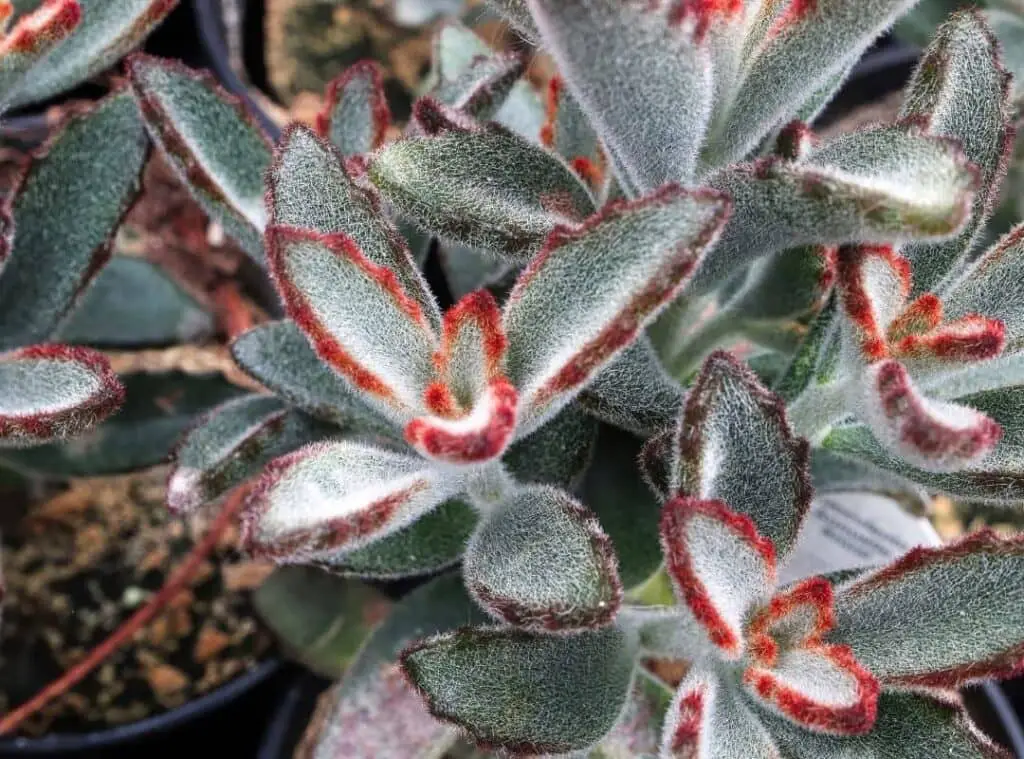
If we consider a domestic pet like a cat, it could get badly affected by toxic succulents. It is common among the cats to reach the green house plants when they go in search of chlorophyll and chances are that they could consume them.
In this circumstance, they will finally chew on the toxic sap in those succulents. This mostly happens with the pets who cannot locate other plants to eat. Hence why, they tend to go for whatever the plants they could reach in their home garden.
Poisonous succulents
Aloe Vera
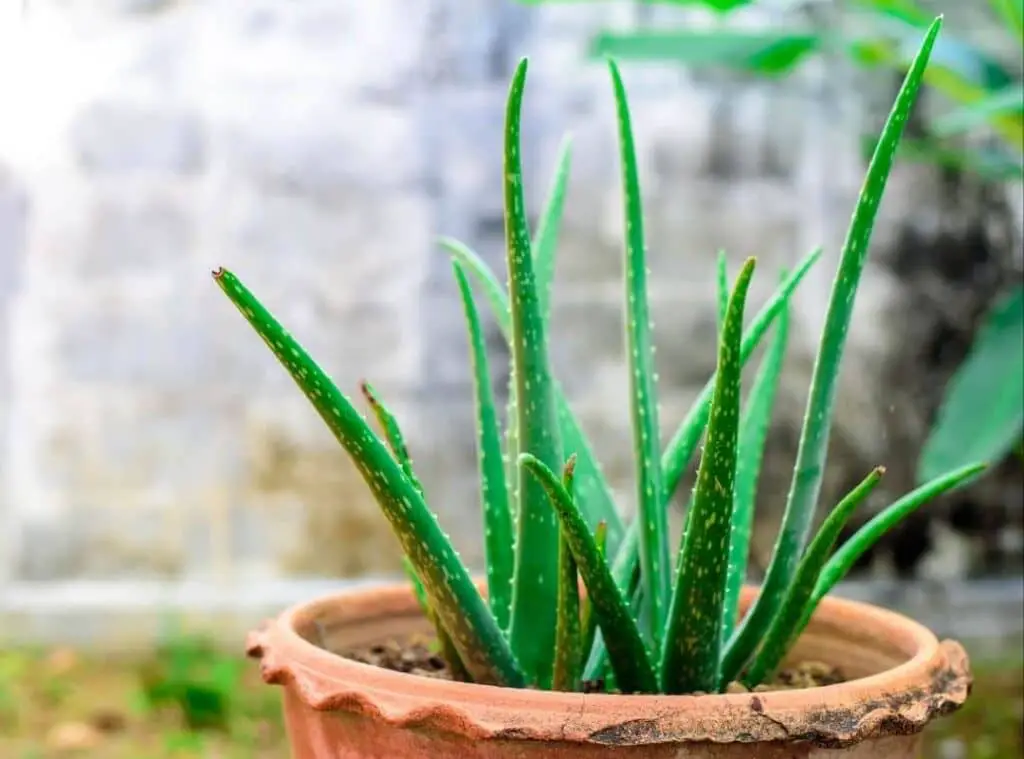
This is a widely known plant in the world. Aloe Vera generally contains a short stem. Moreover, they will comprise long slender leaves which have gathered around the stem.
Their leaves are thick and fleshy. Further you can spot some other varieties of Aloe which would contain white specks on the stems. One special thing about Aloe Vera is its healing ability. People use this to cure wounds and sun burns.
This is a toxic succulent and be mindful when you let the pets reach the plant. Aloe could be risky for pets as it forms a sap which is poisonous. This could be toxic to dogs, cats, and for horses too.
Further, a substance called saponin is the main poison which makes the impact. It is a chemical and could be risky for the pets once they ingested that. The elements in the Aloe could lead to diarrhea. The impact of diarrhea could be fatal due to dehydration.
Hence keep an eye on the pets whether they try to approach the plants you have grown. If you let them hang around with the Aloes, there will be severe repercussions.
Abdominal pain, diarrhea, nausea, vomiting, skin irritation, lethargy, tremors could be the main symptoms when they consume the Aloes.
Kalanchoe Tomentosa
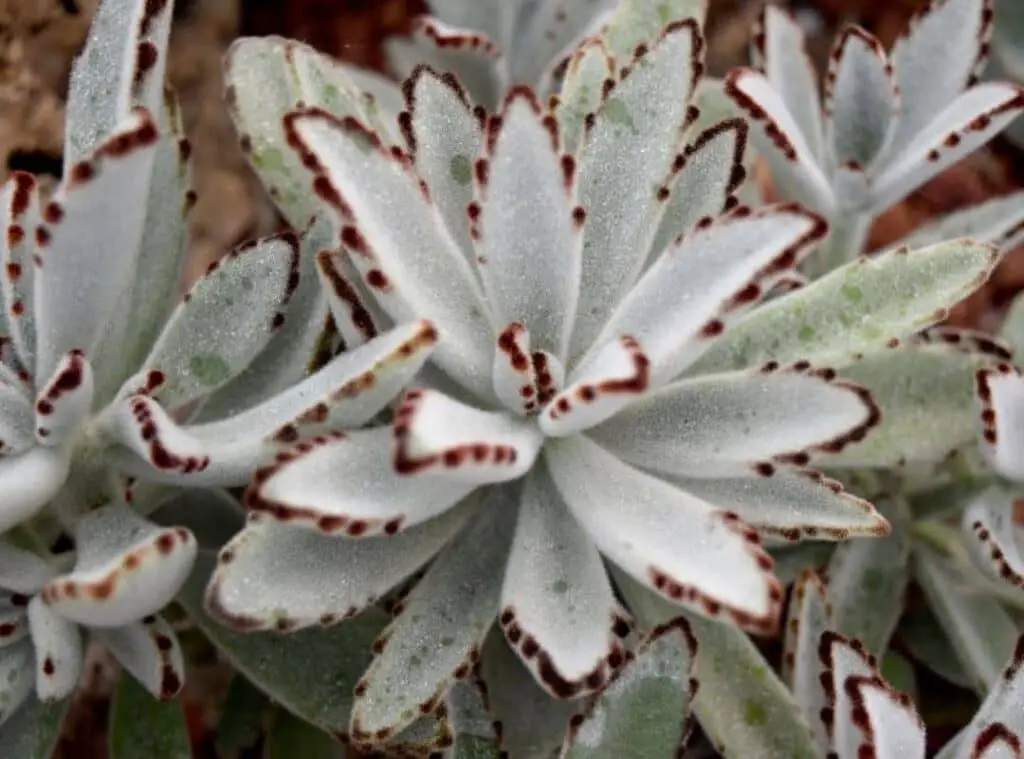
Kalanchoes are famous indoor grown house plants which contain many different species. They are easy to grow and look great when they bloom with showy flowers. The common name of Kalanchoe Tomentosa plant is panda plant. They are perennial shrubs which carry furry leaves. You could spot them in gray green in color. They could carry brown spots on the leaves tips.
You could use this plant to create beautiful ornaments too. Lot of people tend to grow them indoors due to low maintenance and fascinating appearances.
They are toxic to cats and dogs and to other wildlife as well. A substance called bufadienolides cardiac glycosides is included in this plant and they could cause unusual heartbeats, severe weaknesses, and abnormal heart rhythm as well.Not only that, It could even be life threatening once it is ingested in big quantities.
Kalanchoe Daigremontiana
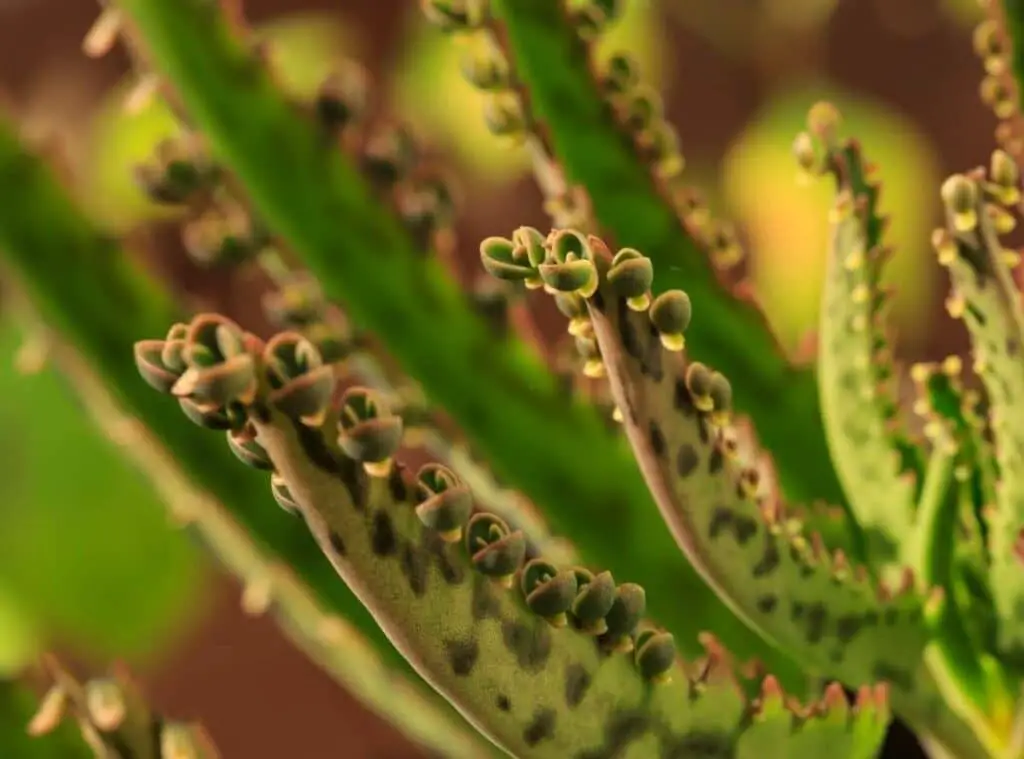
The mother of thousands plants is the common name of this plant. This is a succulent type which could be harmful for cats, dogs , cattle and for birds as well. This plant is native to Madagascar. It is a very popular plant among the succulent lovers as a fascinating indoor plant. They do not bloom often when you grow them indoors.
Once you grow them outdoors, they tend to bloom in small, lavender color flowers in late winter. One more specialty regarding the mother of thousands plants is that, it won’t produce seeds and instead they will be making plantlets. They are healthy and fast growers too.
After that mother plant will die and tiny plants will replace the mother plant. . Hence, you could call them invasive. Mother of thousands plants are hardy and It contains a toxic steroid called daigremontianum.
Common symptoms of ingestionMother of thousands plants would be vomiting, diarrhea weakness. Apart from that, there could be sometimes symptoms such as unusual heart rate, tremors, seizures, collapse too.
Kalanchoe Delagoensis
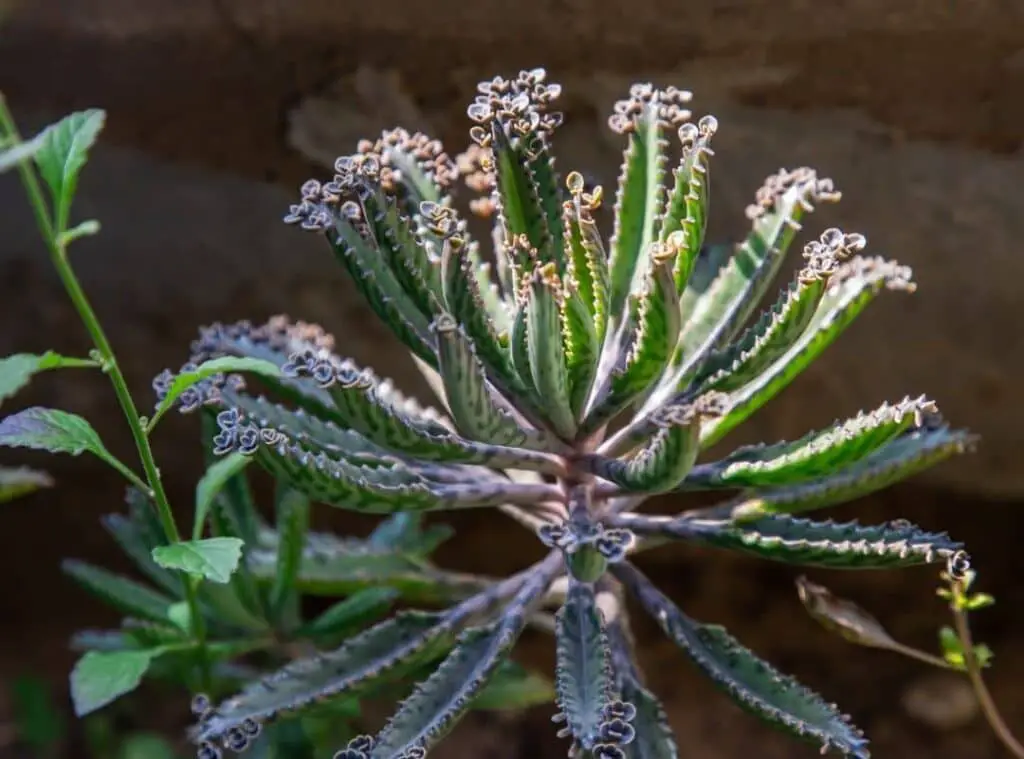
Common names of this plant are mother of millions, devil’s backbone, and chandelier plant. They are harmful for dogs, cats, other pets as well as for grazing animals too.
This is a fast growing plant which has the ability to multiply very easily no matter where they land. Mother of millions is the perfect name to call them.
They form Little plantlets which will be grown at the edges of the plants. They can grow very aggressively wherever they are , their seeds can thrive for several years even when the plants are taken off.
They could adjust to any kind of environmental conditions including drought conditions too. Some people call it weed or invasive species in certain areas.
They have a substance called bufadienolide cardiac glycosides, which could be life threatening once consumed in larger quantities. The level of toxicity could be mild to moderate and sometimes it could be severe too.
Sickness in gastrointestinal system, vomiting, diarrhea, change in the pulse are some of the symptoms of this once it is ingested. There will be even more enormous bad effects once it’s consumed in larger amounts.
Crassula Ovata
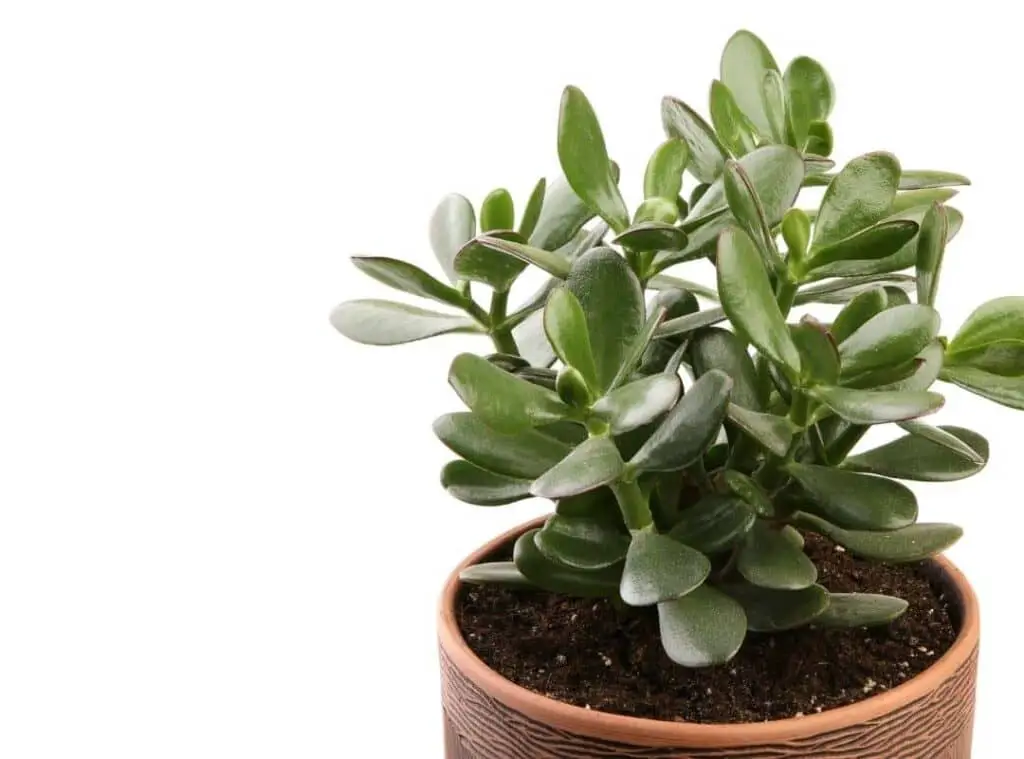
Jade Plant. Money tree or the lucky plant are some other names which you could use to call this plant in common. . Jade plant is an endemic plant in South Africa.
Jade plant is a very popular plant among the succulent fan lovers. Despite all these, they are toxic plants for dogs as they form a poisonous sap within its stems.
You could spot their leaves in shiny thick, soft and green in color. They will be one feet high when they grow indoors while it could be several feet high when grown in outdoors. This generally contains small pink or white flowers. This remains evergreen and contains thick branches as well.
Their leaves contain an unknown substance which causes its toxicity. They are toxic for both cats and for dogs. As such, avoid the dogs hanging around with the Jade plant unless they could get sick and could show symptoms such as vomiting. Further they could be lethargic too.
They are harmful for cats as well. If they consume Jade plants, they will start vomiting and could cause depression symptoms as well. Moreover, the leaves of this Jade Plant could be toxic to pets if ingested. Pets will act lethargic over time if they ingest this.
You could see symptoms such as vomiting, depression, etc. when they consume these. We are yet to find out as to what exactly it causes for the toxicity of the jade plant. Nobody has discovered it scientifically too.
Cats and dogs won’t digest the plant material and they will try to show more symptoms which could vary from mild to moderate levels.
The Common symptoms would be vomiting, depression, incoordination, lethargy.
Crassula Arborescens
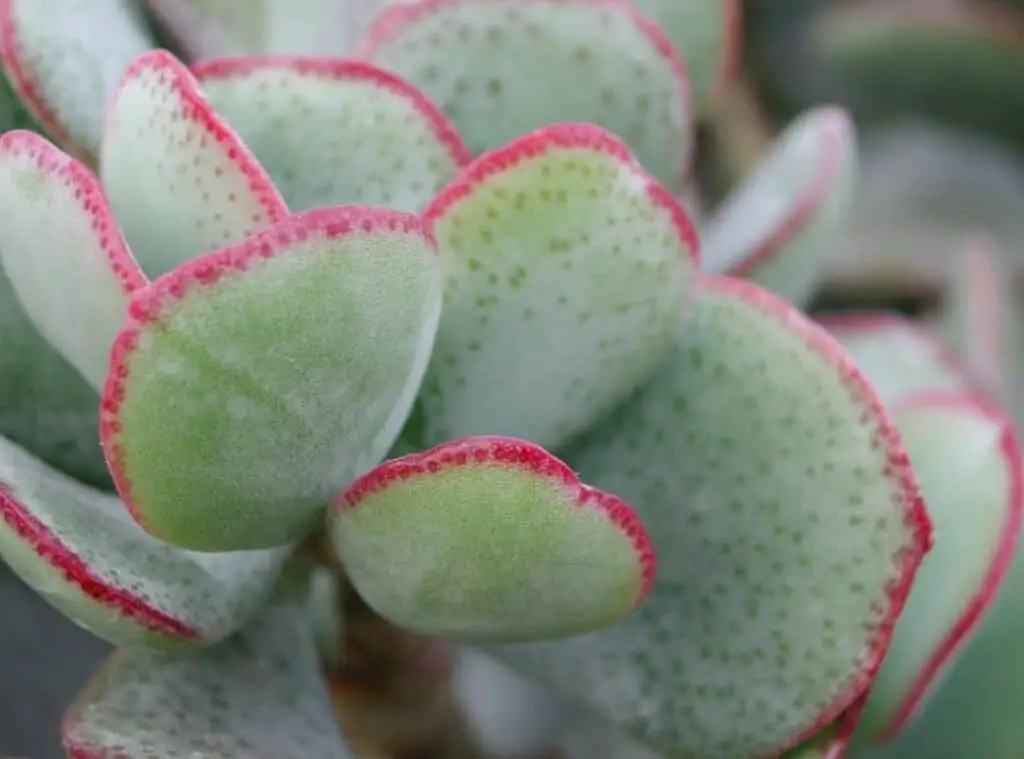
Silver Jade plant, Chinese Jade, Money plant are some common names of this plant. They are poisonous for both cats and dogs. This is an endemic plant in South Africa.
Their silver dollar leaves with reddish edges add uniqueness to this succulent . however the poisonous substance of this also yet to be revealed. General Symptoms would be nausea, vomiting.
Euphorbia milii
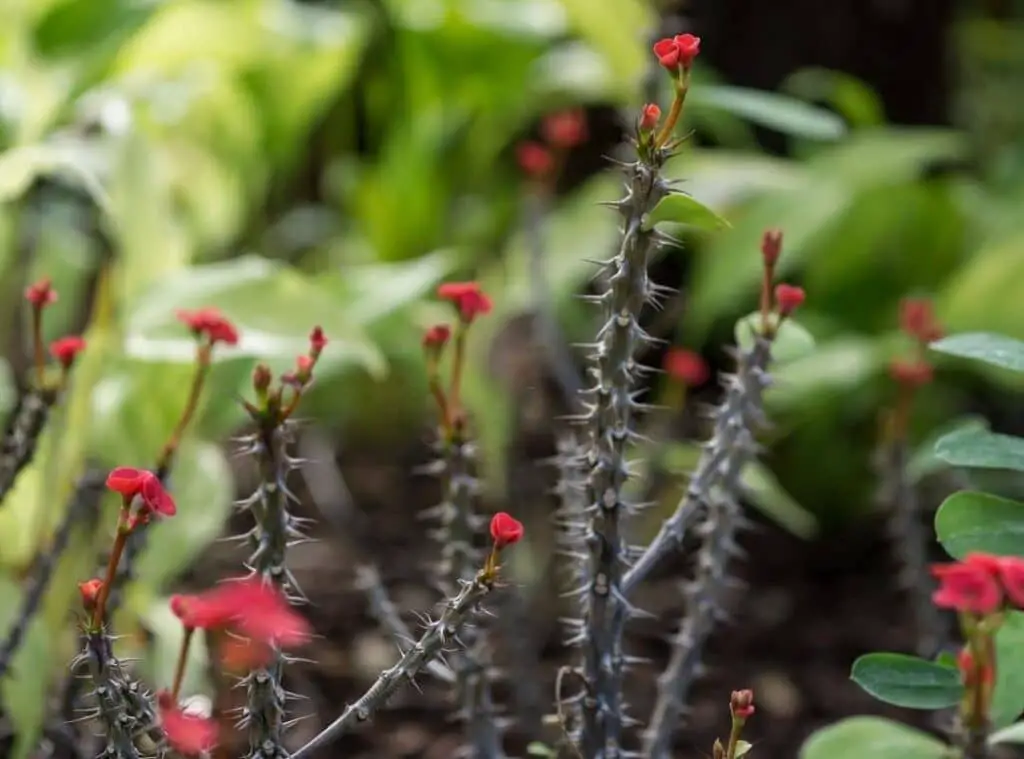
the crown of thorns is the common name of this plant. . They are harmful for dogs and for humans as well. This is a native plant in Madagascar. Many people tend to grow it indoors.
They could be 1-2 feet in height once they mature and their flowers have a great worth too. Flowers could be either red, pink or white in color. sharp thorns about half an inch long. have covered them too.
Euphorbia milii is bitter in taste and prickly. Hence,it is very rare to see the accidental poisoning. The substance called latex has the strongest amount of poisoning . latex is the white milky sap of the plant. the entire plant’s parts would be quite irritating for the pets. It could be uncomfortable for the skin and could be even harmful when you consume it.
Hence be careful when you are handling these plants.
You could spot symptoms such as nausea, vomiting and diarrhea when pets ingest this. Furthermore it could cause irritation in skin too. . On the other hand, Dogs may also get their eyes and mouth areas swollen if they contact with this.
Euphorbia Tiruacalli
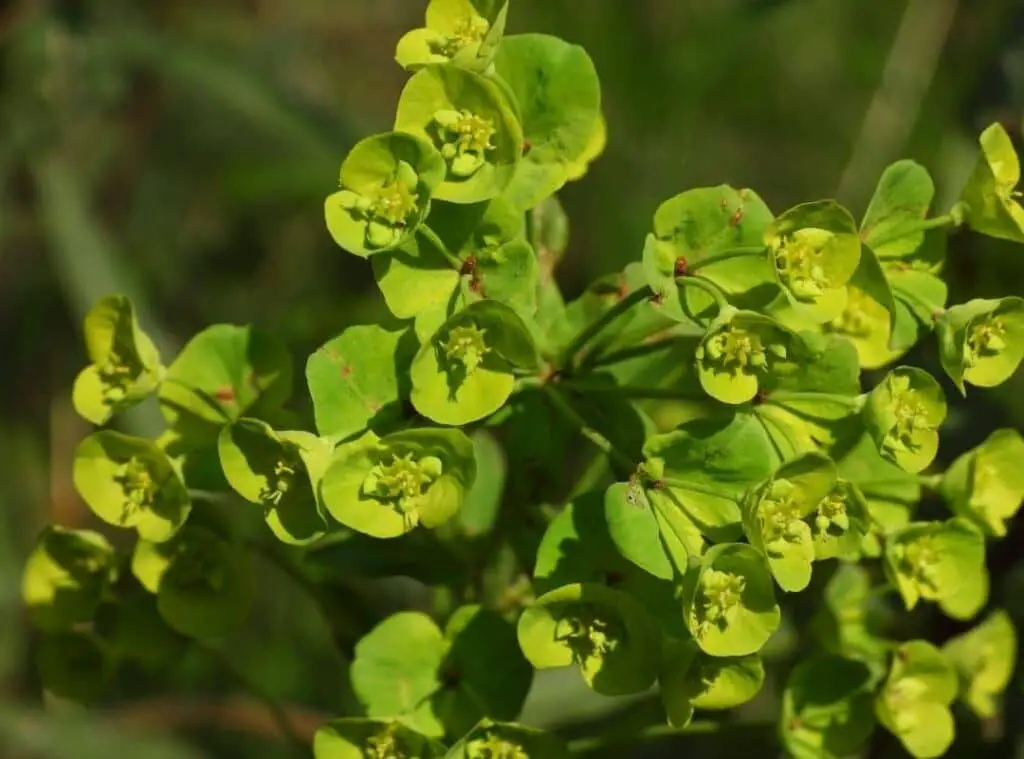
Firestick, Pencil Tree Plant, Pencil Cactus are some other names which you could use to call Euphorbia Tiruacalli in general. They are harmful for dogs, cats and for horses as well.
Over 2000 species belong to the genus called Euphorbia. Africa and Madagascar are the native countries of E. Tiruacalli. They contain tiny slender leaves with branches in cylindrical shape.
Colors of E. Tiruacalli could vary from green to orange red. It could get intensified during colder winter times. The main factor for toxicity is the sap which they produce.
Clinical symptoms would be such as vomiting, mild irritation to mouth and stomach.
Sansevieria Trifasciata
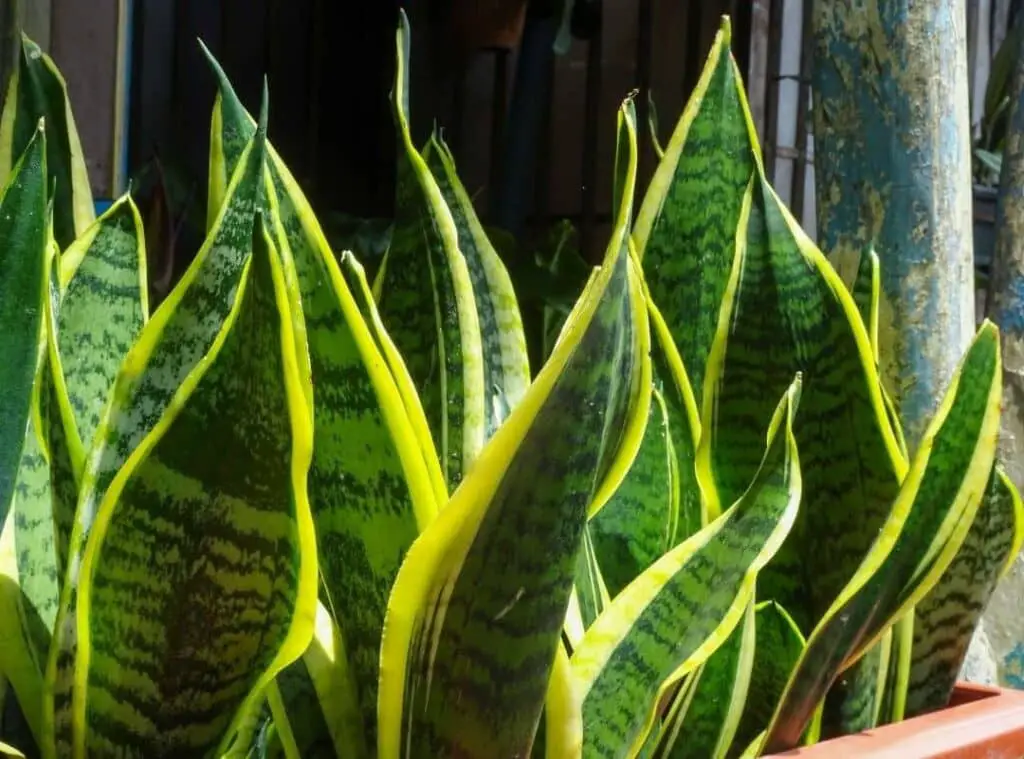
Sansevieria trifasciata is the scientific name of a snake plant. This type of succulent is unbreakable. Literally, it could thrive for several weeks without water or without sunlight.
This is a native plant in west Africa. These are perfect plants for a fresher in gardening as we can leave them ignored for sometime and they would still survive. Their looks will remain to be the same. Their leaves will be thick. When they grow, they will tend to grow right up.
The leaves will be in pointed shape. . When they generally grow, their height will be about 3 feet.. The patterned markings of them look like a pattern in snake.
This is a beneficial plant as it helps to purify the air.
Cats and dogs could be victims of this succulent. They consist of Saponins and they are responsible for many reactions in cats and dogs.
Symptoms would be such as nausea, vomiting, diarrhea and lethargy.
Senecio Rowleyanus
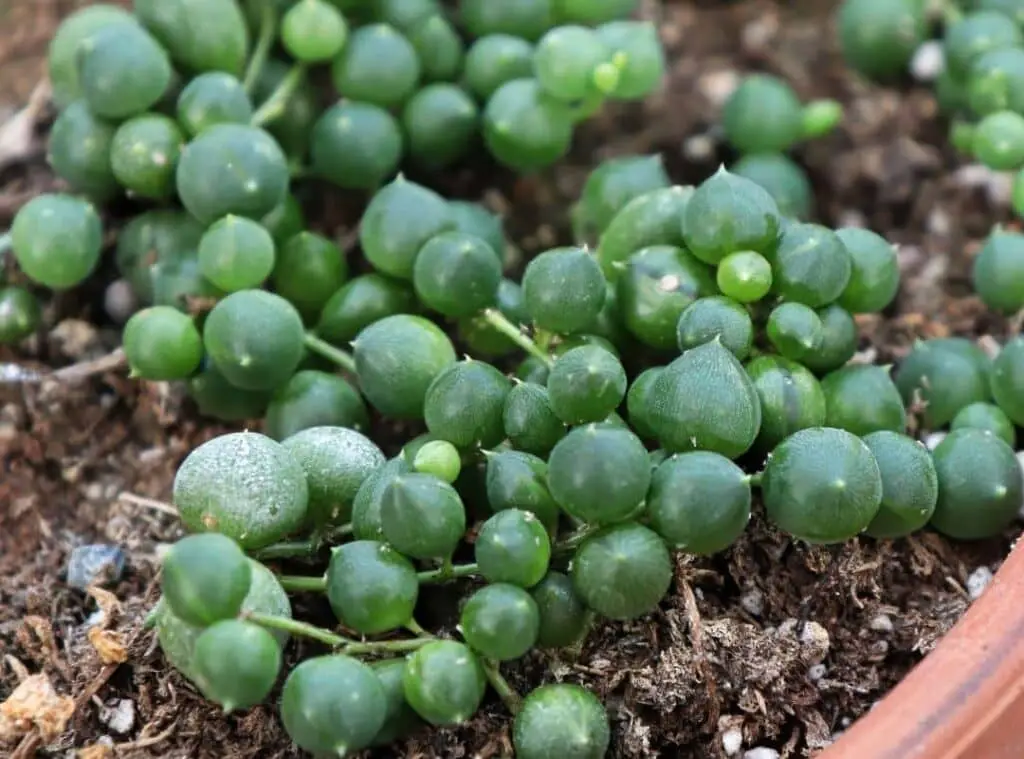
Scenecio rowleyanus is a plant which blooms with flowers. string of pearls ,is the common name of this. it is more like a creeper type. Further this is a perennial succulent which is originating from driver parts of southwest Africa.
This plant comes very handy if someone cannot provide the conditions for a succulent’s growth since this is not the type of plant where we should worry about conditions which we should provide.
This will be handy in using for hanging containers. It could get quite rough on you as well as on the pets as well. It carries a sap which causes fatality, vomiting skin irritation and diarrhea too.
It could be quite uncomfortable when you touch it. Be extra vigilant when you let the pets deal with this as it could be very dangerous.
vomiting, diarrhea, drooling, lethargy are some of the symptoms when the pets consume this.
safety guide for Poisonous Succulents
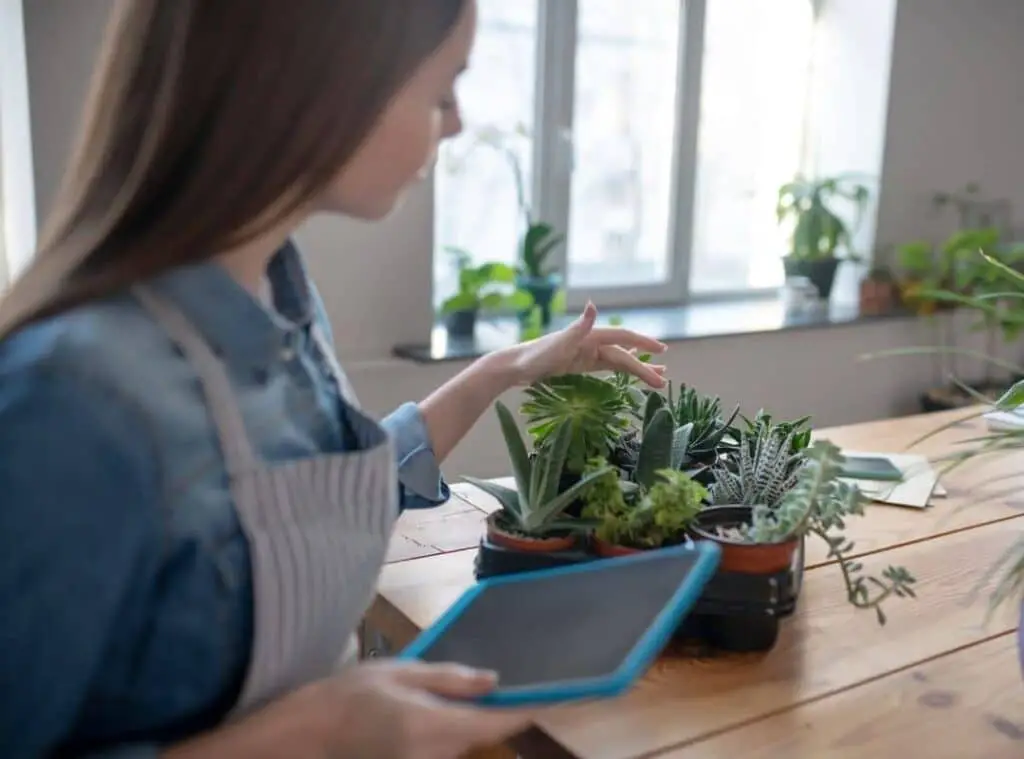
It is always better to keep your succulents away from your pets. Further, you could avoid yourself in purchasing the succulents which could be toxic for your pets.
However if you still insist yourself in buying one, make sure you locate the succulents in an inaccessible area to the pets, so that there will be no harm done.
In spite of all these precautionary actions you had taken, and if your pet had still consumed the plant, contact your vet or the poison control to proceed with the treatments.
Best to do is to refrain from buying toxic plants and instead you may buy safer succulent for the pets so that you do not have to worry about anything.
If you are both a succulent fan lover and pet lover here are some of the steps you could take to protect both parties.
You may spray bitter apples on your plant. It is entirely safer for the plant and for the pets as well. It will deter your pets from snacking on the succulents.
Supply alternate greenery for the pets to chew. Pet grass would be very handy here and it will keep the pets occupied.
Stay with the pets as much as you can and try to engage with them whenever possible. Consequently they will not have any time to reach those plants.
Barricading your succulents whilst utilizing stuff such as bird cages, terrariums.
Locate the succulents in higher places, this could be a great trick to protect them from small pets and from kids, but you should not do this with cats.
Ensure that you collect the flying pieces of the plants around your house.
Above all, ensure that you protect yourself before dealing with the toxic succulents, particularly from the sap which could be poisonous.
What to do if your pet eat a poisonous succulent?
In case you have a situation like this, the very first thing you need to do is to identify the plant. Next you may call animal poison control.
Apart from that, you may also contact your local veterinarian’s office for their instructions. In case he is not up to date with the succulents, he could contact the poison control center for clarification. They will guide you further.
What happens if you eat a Poisonous succulent?
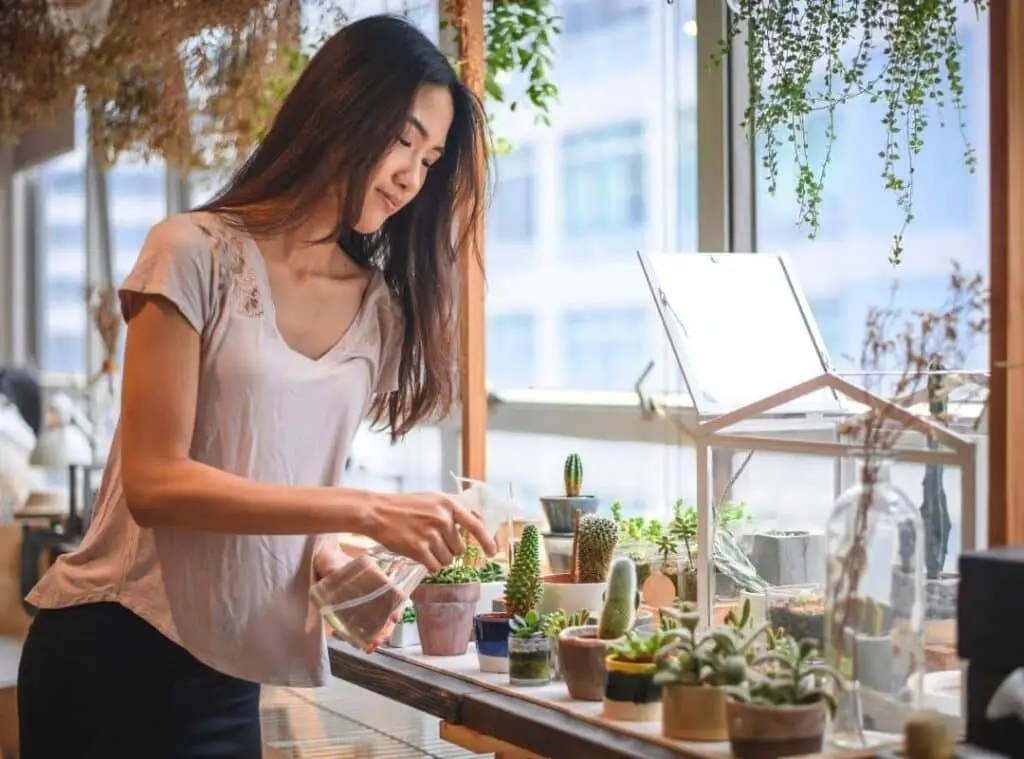
Succulents as a whole are not very dangerous if we consider them by the context of toxicity. Their spines and the needles are the most risky segments of the succulent.
In case you don’t know as to what succulent you are growing and if your kid has consumed it , the best thing to do is to call poison control. There won’t be a severe impact on the kid, however it could possibly make an impact on their health and make them sick.
To the delight of succulent fan lovers, many types of the succulents are not poisonous to humans. We could use the majority of the succulents to make common medicines and ointments.
On the other hand, there are certain toxic succulents which could harm humans too. For example, certain Euphorbia. When you try to touch it or by mistake ingest it, they could be poisonous. As such, take extra precautions and be vigilant when dealing with those kinds of plants.
In case you are not aware of the succulent you grow, ensure that you call poison control first.
Are succulents poisonous to cats and dogs?
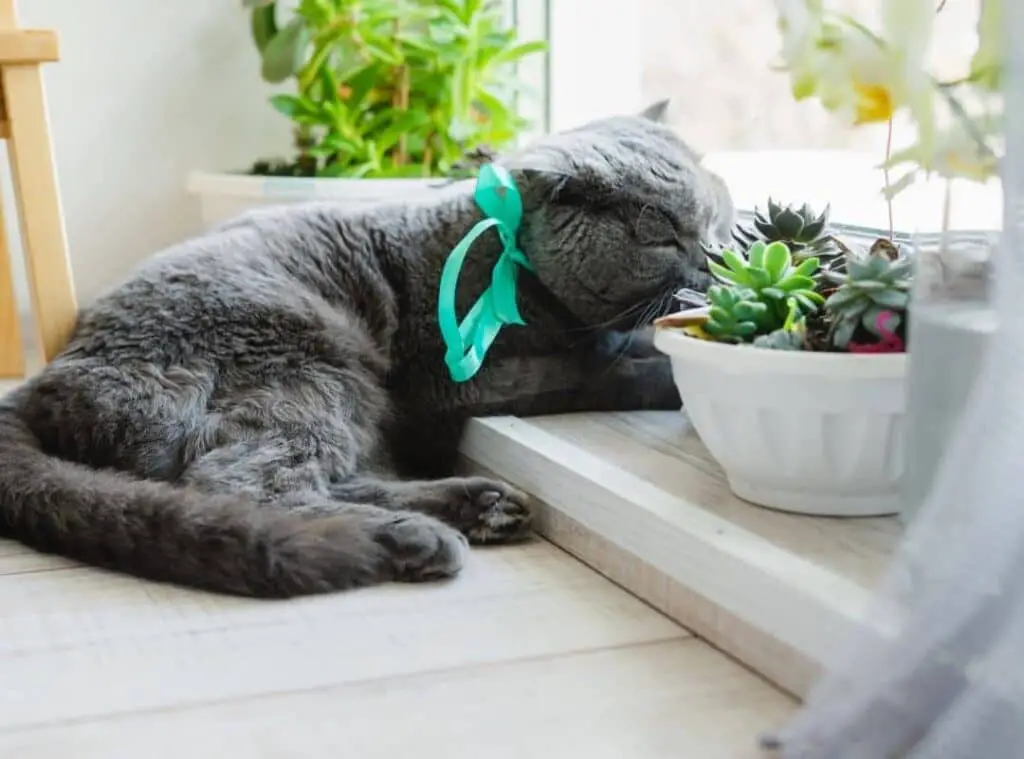
Majority of the succulents are not poisonous for petSucculents are the types of plants which anyone would want to own in their indoor garden. That is mainly because of their ability to bear the light conditions and due to their easy maintenance and the minimum care treatment they would want.
Additionally, they do not want us to water them on a frequent basis. Finally, their easy propagation is also another added advantage of growing succulents. There are certain types of succulents which are unique in their looks and we cannot find any other plant which could match the beauty of those.
Having said all these, growing a succulent for a pet lover could be somewhat questionable. Because they may be wondering whether the succulents would make any impact on their pets and whether it is safer for them.
Majority of the succulents are not poisonous for pets. There are certain succulents which could be toxic and they would also not be deadly. Nevertheless they could still trouble you by making the pets discomfortable. Further they could cause further repercussions like diarrhea too.
If you are a pet lover and if you wish to grow potentially toxic succulents , examine the personality of your pet first. If you have a plenty of pets around your house, it is very unlikely that they would go and consume this.
Pets do not like them a lot. Chances are that instead of landing on these succulents, they would rather munch on something yummier like cat grass.
Consider that your pet is not aggressive and if it has not attacked any other pants before,then you may proceed with a toxic succulent. Keep in mind, that animals could also sometimes damage your plant too. Hence, take necessary actions to avoid
Are succulents poisonous to birds
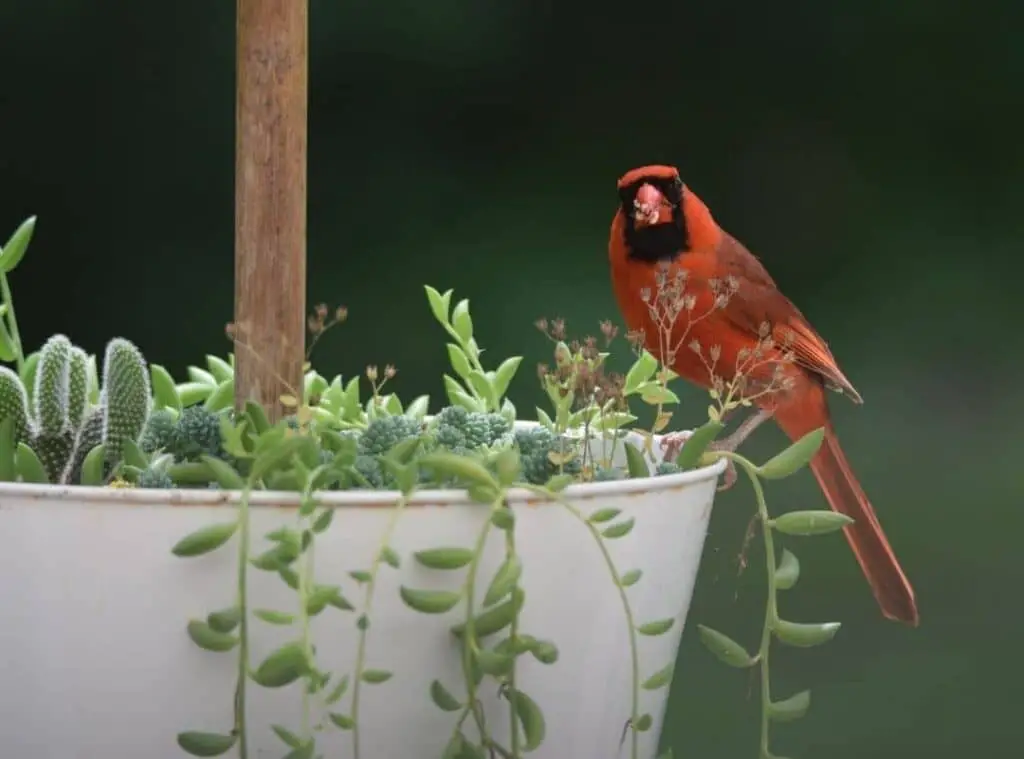
There are some exceptional succulent types which could be toxic for birds. However all the succulents are not harmful for the birds.
If you are fan in both succulent growing and in having pets at home, ensure that you take necessary actions to protect the birds from which could harm them as well as your succulent plant too.
If we elaborate more on the plants which are harmful for the birds, they are as follows.
- Amaryllis
- Daffodil
- Holly
- Ivy- Green
- Mistletoe
- Morning Glory
- Philodendron
- Poinsettia
- Shamrock
Are fire stick a Poisonous Succulents?
These succulents are toxic from mild to moderate levels for pets and for humans as well.Pencil cactus, firestick pencil cactus, sticks on fire, or milk bush are some common which we could use to call fire stick succulents. .
If we contact the plant’s sap, there could be some dangerous repercussions. If it touches the skin, there will be irritative rash developed at the contacted surface. There will be further repercussions if they contact the eyes. chances are that temporary blindness could also happen.too.
Read Next : Ric Rac Cactus (Cryptocereus Anthonyanus)| Succulent Care Guide

